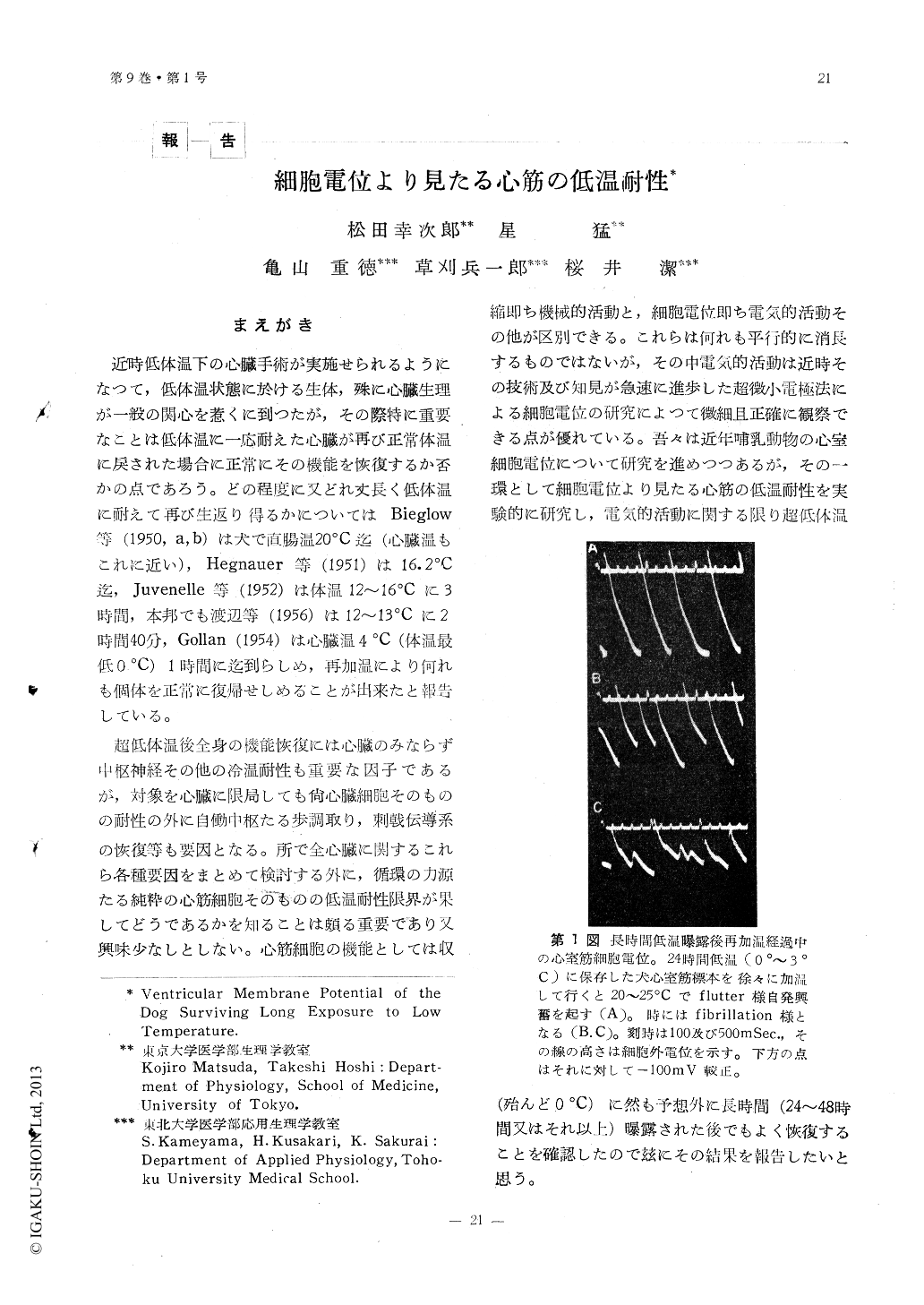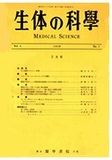Japanese
English
- 有料閲覧
- Abstract 文献概要
- 1ページ目 Look Inside
まえがき
近時低体温下の心臓手術が実施せられるようになつて,低体温状態に於ける生体,殊に心臓生理が一般の関心を惹くに到つたが,その際特に重要なことは低体温に一応耐えた心臓が再び正常体温に戻された場合に正常にその機能を恢復するか否かの点であろう。どの程度に又どれ丈長く低体温に耐えて再び生返り得るかについてはBieglow等(1950,a,b)は犬で直腸温20℃迄(心臓温もこれに近い),Hegnauer等(1951)は16.2℃迄,Juvenelle等(1952)は体温12〜16℃に3時間,本邦でも渡辺等(1956)は12〜13℃に2時間40分,Gollan(1954)は心臓温4℃(体温最低0℃)1時間に迄到らしめ,再加温により何れも個体を正常に復帰せしめることが出来たと報告している。
超低体温後全身の機能恢復には心臓のみならず中枢神経その他の冷温耐性も重要な因子であるが,対象を心臓に限局しても尚心臓細胞そのものの耐性の外に自働中枢たる歩調取り,刺戟伝導系の恢復等も要因となる。所で全心臓に関するこれら各種要因をまとめて検討する外に,循環の力源たる純粋の心筋細胞そのものの低温耐性限界が果してどうであるかを知ることは頗る重要であり又興味少なしとしない。
The possibility whether the ventricular muscle is able to withstand a long exposure to low temperatures was tested from the standpoint of its electrical activitiy, i. e., the membrane potentials. Excised samples of ventricular free wall taken from freshly killed dogs were immersed in a large amount of oxygenated Tyrode solution and cooled rather gradually to 0~3℃ in a refrigerator, where the samples were kept for protracted periods, 24 to 48 hours or more. After the cooling the samples were rewarmed to 37℃ within 10 to 20 minutes and their membrane potentials were examined by the microelec-trode technique.

Copyright © 1958, THE ICHIRO KANEHARA FOUNDATION. All rights reserved.


